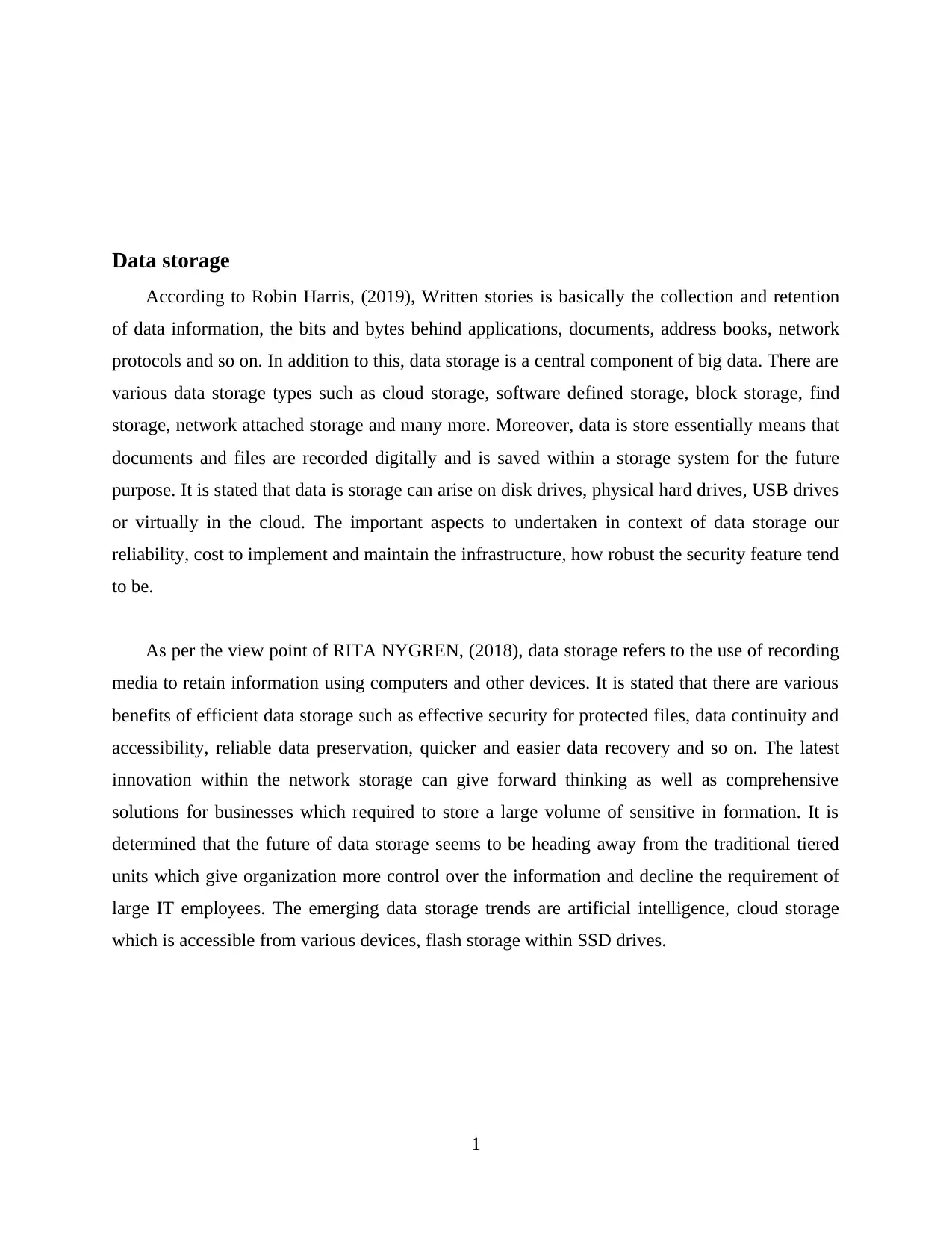Data Storage: Types, Benefits, Trends, and Future of Data Storage
VerifiedAdded on 2022/12/28
|4
|376
|62
Report
AI Summary
This report delves into the realm of data storage, offering a comprehensive overview of its various aspects. It begins by defining data storage and its significance, particularly in the context of big data. The report explores different types of data storage, including cloud storage, software-defined storage, and network-attached storage, highlighting their respective characteristics and applications. It emphasizes the importance of data storage for the secure and efficient management of digital information. The report also examines the benefits of effective data storage, such as enhanced security, data continuity, and faster recovery. Furthermore, it discusses emerging trends in data storage, including the use of artificial intelligence and the increasing adoption of cloud-based solutions. The report concludes with an analysis of the future of data storage, including the shift away from traditional tiered units and the growing importance of flash storage within SSD drives. The report references relevant sources to support its claims and provide a more detailed understanding of the subject matter.
1 out of 4











![[object Object]](/_next/static/media/star-bottom.7253800d.svg)